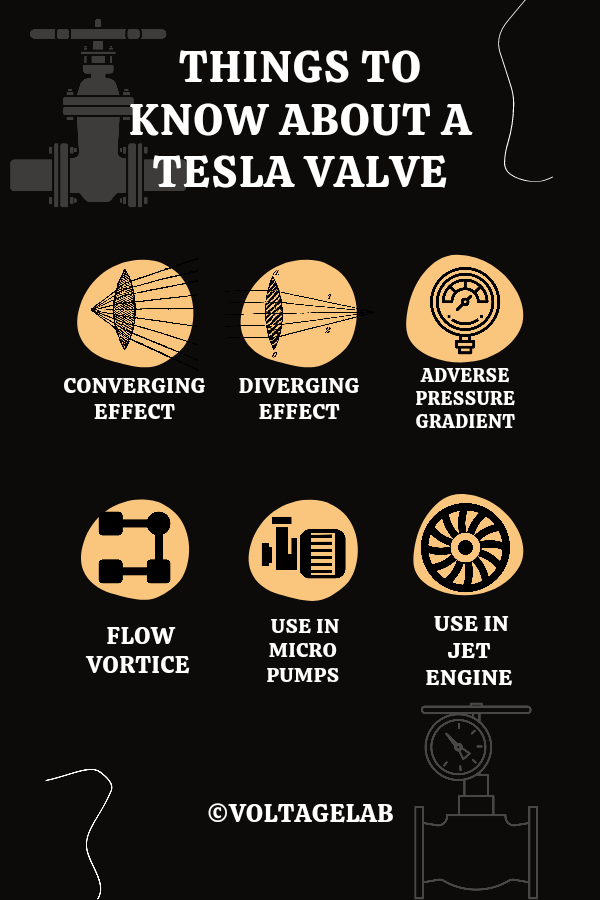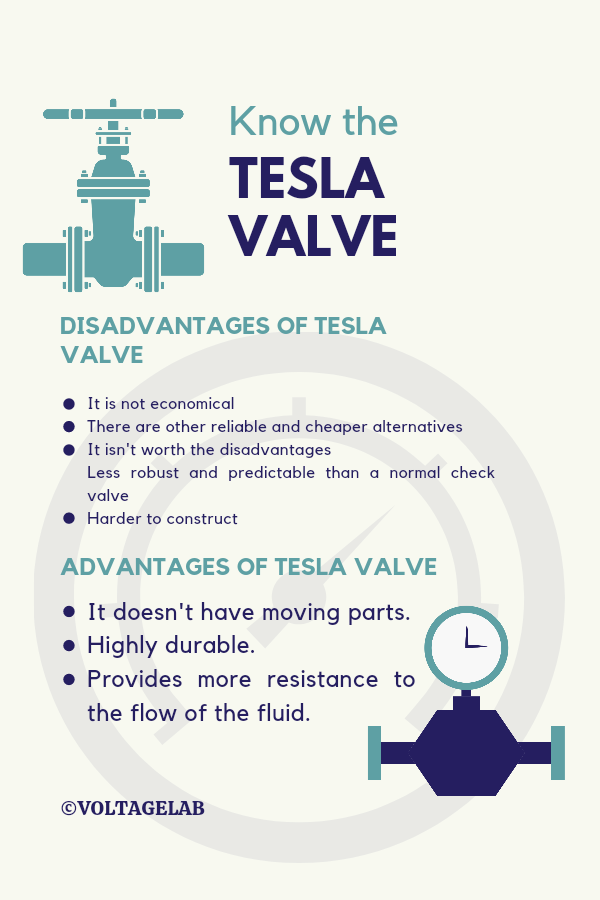You might wonder what is a tesla valve? If you have slight interest in Fluidics, you will know. Today, let’s explore the topic.
The Tesla Valve is a simple water restricting module. It obstructs the water flow. The main agenda of it is to make the water flow slower. But, is it really useful? Nikola Tesla’s Valve: what do we know? Again, what have we learned? Here are some checkpoints that you will learn after reading this exciting article:
What is a Tesla Valve?
It is a flow restricting system. We can consider Tesla’s device useless if we only need an inexpensive, leak-proof, one-way valve. Because, it actually is useless in comparison with other normal valves.
Tesla once made a claim that his valve can make water flow 200 times slower. But, it is proven through research by Leif Ristroph at New York University that it only makes the water flow 2 times slower. In 1920, Nikola Tesla got his invention patented. It is just a one way valve with no moving parts. Surely, we cannot consider it to be a marvel in fluidics. But, it was an invention worth the trial at that time.
Is it possible to design a one-way valve without any moving parts?
The answer to this question leads to Tesla’s Valve. Yes, it is possible. Nikola Tesla made this possible in the early 20th century.
How does a Tesla Valve Work?

Consider a simple channel with some obstacles at an angle to create restriction in the flow of the stream of any fluid. The obstructions cause two types of effects:
- Converging Effect:
When the flow of the stream is from the right to the left considering the obstructions to be facing the left, this effect takes place. It is an easy flow of fluid. Because, the fluid tends to flow in a single straight direction without any obstruction. Flow of fluid is faster.
- Diverging Effect:
It Is just the opposite of the converging effect. The fluid flow is very difficult here. Because the amount of obstruction is more. Due to the position of the obstructions, the fluid sometimes tends to take a reverse 180° turn. This creates obstructions in the flow of fluid. As a result, it becomes slower.
Adverse Pressure Gradient Condition:
- In converging flows as the area reduces the velocity will increase along the flow.
- This velocity increase results in a pressure drop along the flow for diverging flow.
- The pressure will increase along the flow.
- This pressure increase is what we know as an adverse pressure gradient condition.
Flow Vortices:
- The pressure increases along the flow.
- The fluid particle decelerates along the length.
- After a particular length flow reversal could occur.
- This reversal will lead to flow vortices.
- Energy loss may also occur.
As a result, diverging flow is a difficult flow to maintain. It offers far more resistance than a converging flow.
Advantages and Disadvantages of a Tesla Valve
Nikola Tesla had an idea that his invention will cause great help to the world. Let’s see how it actually came into use. It has many disadvantages but only one advantage considering other normal check valves.

Disadvantages of Tesla Valve
- It doesn’t prevent the reverse flow, but slows it down.
- It is expensive.
- Not easy to construct.
- Less reliable.
There are many more disadvantages.
Advantages of Tesla Valve
- It doesn’t have moving parts.
- Highly durable.
- Provides more resistance to the flow of the fluid.
What are the uses of a the valve?
It provides more resistance to the flow in one direction without any moving parts.
Its uses:
- There are research applications in microfluidics for it.
- The Tesla valve has a use in the pulse jet engines.
- It has a use in micro pumps to deliver fluid in very small quantities (as small as 3 milliliters per minute).
Why isn’t the tesla valve more commonly in use today?
The reasons:
- It is not economical
- There are other reliable and cheaper alternatives
- It isn’t worth the disadvantages
- Less robust and predictable than a normal check valve
- Harder to construct
Conclusion
I hope you enjoyed my ultimate guide to what is a Tesla Valve.
Now I’d like to hear from you: do you think Tesla Valve has a use today? Either way, let me know by leaving a quick comment below.
Read More Exciting Articles



